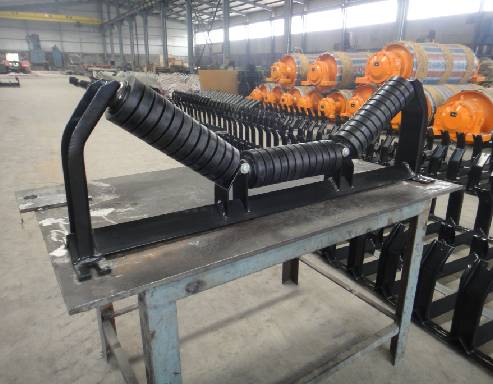 Afrikaans
Afrikaans  Albanian
Albanian  Amharic
Amharic  Arabic
Arabic  Armenian
Armenian  Azerbaijani
Azerbaijani  Basque
Basque  Belarusian
Belarusian  Bengali
Bengali  Bosnian
Bosnian  Bulgarian
Bulgarian  Catalan
Catalan  Cebuano
Cebuano  Corsican
Corsican  Croatian
Croatian  Czech
Czech  Danish
Danish  Dutch
Dutch  English
English  Esperanto
Esperanto  Estonian
Estonian  Finnish
Finnish  French
French  Frisian
Frisian  Galician
Galician  Georgian
Georgian  German
German  Greek
Greek  Gujarati
Gujarati  Haitian Creole
Haitian Creole  hausa
hausa  hawaiian
hawaiian  Hebrew
Hebrew  Hindi
Hindi  Miao
Miao  Hungarian
Hungarian  Icelandic
Icelandic  igbo
igbo  Indonesian
Indonesian  irish
irish  Italian
Italian  Japanese
Japanese  Javanese
Javanese  Kannada
Kannada  kazakh
kazakh  Khmer
Khmer  Rwandese
Rwandese  Korean
Korean  Kurdish
Kurdish  Kyrgyz
Kyrgyz  Lao
Lao  Latin
Latin  Latvian
Latvian  Lithuanian
Lithuanian  Luxembourgish
Luxembourgish  Macedonian
Macedonian  Malgashi
Malgashi  Malay
Malay  Malayalam
Malayalam  Maltese
Maltese  Maori
Maori  Marathi
Marathi  Mongolian
Mongolian  Myanmar
Myanmar  Nepali
Nepali  Norwegian
Norwegian  Norwegian
Norwegian  Occitan
Occitan  Pashto
Pashto  Persian
Persian  Polish
Polish  Portuguese
Portuguese  Punjabi
Punjabi  Romanian
Romanian  Russian
Russian  Samoan
Samoan  Scottish Gaelic
Scottish Gaelic  Serbian
Serbian  Sesotho
Sesotho  Shona
Shona  Sindhi
Sindhi  Sinhala
Sinhala  Slovak
Slovak  Slovenian
Slovenian  Somali
Somali  Spanish
Spanish  Sundanese
Sundanese  Swahili
Swahili  Swedish
Swedish  Tagalog
Tagalog  Tajik
Tajik  Tamil
Tamil  Tatar
Tatar  Telugu
Telugu  Thai
Thai  Turkish
Turkish  Turkmen
Turkmen  Ukrainian
Ukrainian  Urdu
Urdu  Uighur
Uighur  Uzbek
Uzbek  Vietnamese
Vietnamese  Welsh
Welsh  Bantu
Bantu  Yiddish
Yiddish  Yoruba
Yoruba  Zulu
Zulu conveyor pulley lagging
Conveyor Pulley Lagging Enhancing Performance and Longevity
Conveyor systems are critical components in various industries, facilitating the efficient movement of materials. Among these systems, the conveyor pulley plays a paramount role in ensuring smooth operations. However, to maximize the performance and lifespan of conveyor pulleys, lagging becomes an essential feature that cannot be overlooked.
Understanding Conveyor Pulley Lagging
Conveyor pulley lagging refers to the application of a material layer on the surface of a conveyor pulley. This layer serves several functions, primarily to improve traction and reduce wear and tear. Lagging is typically made from materials like rubber, ceramic, or polyurethane, each chosen based on specific operational needs. By enhancing the contact between the pulley and the conveyor belt, lagging helps to prevent slippage and improve the overall efficiency of the conveyor system.
Advantages of Lagging
1. Improved Traction One of the foremost advantages of pulley lagging is the significant increase in traction it provides. A well-lagged pulley ensures that the conveyor belt adheres better, allowing it to handle heavier loads without slippage. This is crucial in industries that deal with bulk materials, as slippage can lead to operational inefficiencies and increase downtime.
2. Reduced Wear Conveyor systems often operate in harsh environments, with components exposed to abrasion and impact. Lagging acts as a protective layer that absorbs shocks and reduces the wear on the pulley surface. This not only prolongs the life of the pulley but also minimizes the frequency of maintenance and replacement, resulting in cost savings over time.
3. Minimized Noise Operating in noisy environments can pose challenges, especially in settings where sound regulations are strict. The application of lagging can help dampen the noise produced by the conveyor system. The rubber or composite materials used in lagging absorb vibrations, leading to quieter operation and a more conducive working environment.
conveyor pulley lagging

4. Enhanced Safety Safety is a critical consideration in any industrial setting. Properly lagged pulleys reduce the risk of belt slippage, which can lead to accidents and injuries. Furthermore, the increased grip provided by lagging can help operators manage loads more safely.
Types of Lagging Materials
The choice of lagging material largely depends on the specific application and environmental conditions. Rubber lagging is commonly used due to its flexibility and excellent grip characteristics. For environments that demand higher resistance to abrasion and chemical exposure, ceramic lagging is often chosen. It offers superior durability, making it ideal for heavy-duty applications. Polyurethane lagging, while less common, provides a good balance between flexibility and wear resistance and is suitable for various applications.
Installation and Maintenance
Proper installation of lagging is vital to ensure its effectiveness. It should be applied uniformly without any gaps to avoid issues during operation. Regular inspections of the lagging are equally important; worn-out lagging should be replaced promptly to maintain optimal pulley performance.
Conclusion
In summary, conveyor pulley lagging is an integral aspect of conveyor system design that enhances performance, safety, and longevity. By improving traction, reducing wear, and minimizing noise, lagging contributes significantly to the efficiency of material handling operations. Selecting the right type of lagging material, ensuring proper installation, and conducting regular maintenance are key to reaping the full benefits of this important component. As industries continue to evolve, investing in quality conveyor pulley lagging can lead to substantial improvements in productivity and cost-effectiveness.
-
Revolutionizing Conveyor Reliability with Advanced Rubber Lagging PulleysNewsJul.22,2025
-
Powering Precision and Durability with Expert Manufacturers of Conveyor ComponentsNewsJul.22,2025
-
Optimizing Conveyor Systems with Advanced Conveyor AccessoriesNewsJul.22,2025
-
Maximize Conveyor Efficiency with Quality Conveyor Idler PulleysNewsJul.22,2025
-
Future-Proof Your Conveyor System with High-Performance Polyurethane RollerNewsJul.22,2025
-
Driving Efficiency Forward with Quality Idlers and RollersNewsJul.22,2025





























